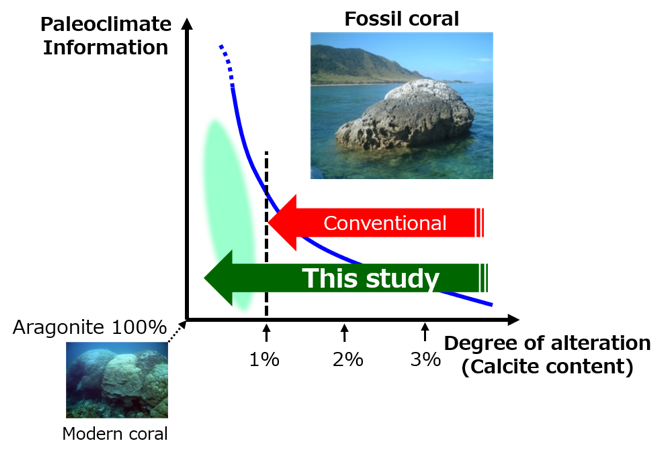A new method to distinguish fossil corals that retain the original marine environmental information
- for further elucidation of paleo-marine environment -
Summary of AIST Press Release on February 21, 2018
>>Japanese
Noriyuki Takada of the Photo-induced Materials Chemistry Group of AIST (current affiliation: Optical Semiconductor Device Group) and Atsushi Suzuki (Marine Geo-Environment Research Group) have developed a new thermoluminescence spectroscopic method to detect very small amount of calcite in fossilized coral, along with and Ueshima Seisakusho Co., Ltd. The result has been posted online (Scientific Reports, https://www.nature.com/articles/s41598-017-18269-y).
While skeletons of living corals are composed of aragonite (orthorhombic CaCO3), in fossil corals, some of them have altered to calcite (rhombohedral CaCO3) during diagenesis. As the alteration proceeds, the environmental information such as temperature and salinity of paleo-ocean recorded in the coral skeleton is lost. Identifying fossil corals with little diagenetic calcite has been a major issue in the research on paleo-marine environment.
The new method can detect a tiny amount of calcite less than 1%, which was impossible by the conventional X-ray diffraction (XRD) method. It also shortens the measurement time to one minute compared to 15 to 30 minutes by XRD. The method is expected to contribute to further elucidation of paleo-marine environment.
Schematic showing the relation between the degree of alteration of fossil corals and the retained amount of paleo-environmental information.


